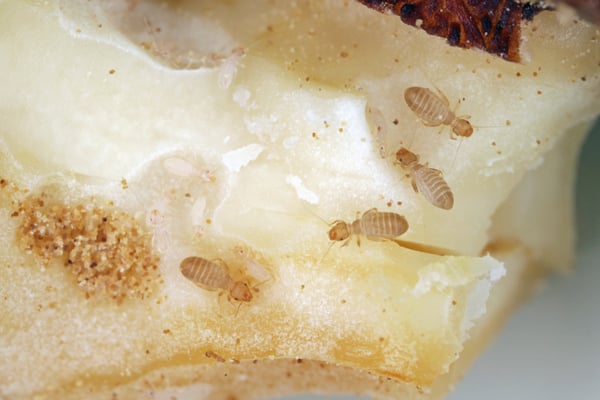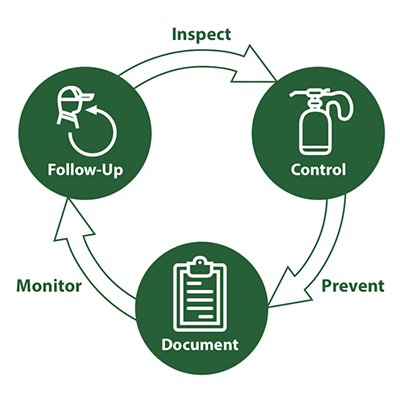Booklice
Appearance And Behavior
Booklice, also known as psocids, look like some lice species and often infest moldy books and damp paper. Despite their common name, they aren’t “true” lice. They only feed on mold and fungi, not people or animals. This fungi, moisture, and decay pest primarily makes a basic nuisance of itself in residential homes. Occasionally, however, they may also infest stored food products or even commercial food processing facilities.
Booklice live all over the world, including all over the US. In fact, there are about 287 known species of booklice living in the US alone right now!
Adult booklice are tiny (only 1/32” to 1/8” long), soft-bodied insects that resemble tiny termites or lice. They’re translucent white, grey, or brown in color. Some species have functional wings, while others do not.
Flight-capable booklice have 4 membranous wings that resemble cellophane. Their front wings are larger than the hind wings. Most winged species hold their wings over their bodies like a roof while they rest. Booklice have chewing mouthparts. Nymphs are similar to adults in appearance except they lack wings, although wing pads may be present.

Booklice seek out humid areas where they can find their primary food source: mold. Generally, they find and infest a source of mold and then begin multiplying rapidly. Infestations may seem to grow rapidly, because booklice can be difficult to notice until there are thousands.
If your home is older, you’ll probably notice booklice in around old books. The starch and glue in books readily supports easy mold growth. You may also find them around other damp areas such as bathrooms, pantries, basements, or attics, or crawl spaces. They’ll find and infest any sources of mold and mildew first thing and spread out as necessary.
Booklice Prevention

Controlling booklice means controlling humidity. Lowering and keeping your structure’s relative humidity below 50% will eventually kill the pests. The faster you can dry things out, the faster you can wipe them out. Correct high relative humidity in your home using dehumidifiers, ventilation, air conditioning, and plumbing repairs.
Booklice Control Process
Plunkett’s technicians start treatment by injecting insecticide aerosol and dust formulations into structural voids where booklice breed. We may also apply an exterior perimeter treatment around the foundation as necessary. The best, most permanent way to keep booklice out of your structure is by practicing moisture control. If your structure is particularly vulnerable to infestation, we may suggest a quarterly ongoing pest management program.
If you’re worried you have an infestation, don’t be! Instead, just contact Plunkett’s Pest Control right away. We’ll find your booklice, wipe them out, and help you make sure they can’t get in again. Whatever your fungi, moisture, and decay pest problem, we’ll work with you to find the answer.

Booklice Control With Plunkett's
At Plunkett’s, our goal is to help you quickly, conveniently, and in the most cost-effective way. We make every effort to be with you the same day or the very next day.
Learn More
There are all kinds of different humidity-loving pests. Click on any of the common fungi, moisture, and decay pests to learn more.






